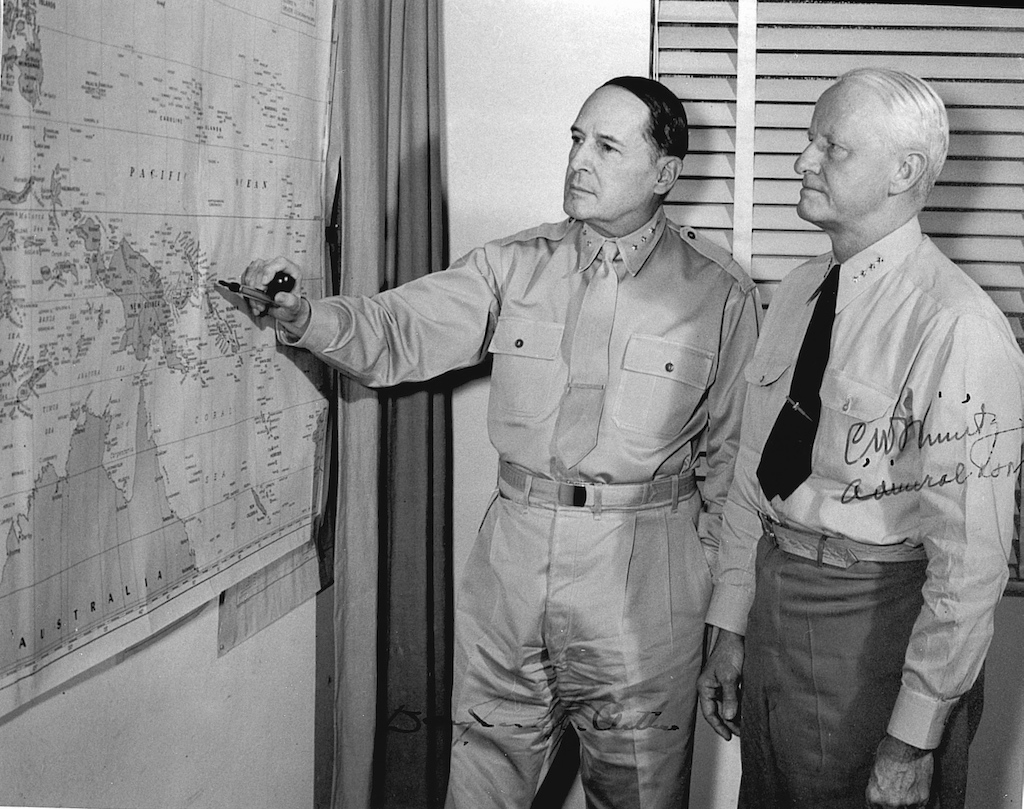With his head office in the CBD of Brisbane and his headquarters in Camp Columbia, Wacol General Douglas MacArthur, Supreme Allied Commander of the Southwest Pacific Area (SWPA) and his military staff, orchestrated several pivotal WWII battles from here. Allied forces from Australia and the Netherlands also participated in these operations. Here’s a breakdown of some of the most significant ones:
Key Battles
- Battle of the Coral Sea (May 1942): A major naval battle that halted the Japanese advance towards Port Moresby, New Guinea. MacArthur’s forces, though not directly commanding the naval fleets, provided critical intelligence and air support. This battle marked a turning point, shifting the momentum in favour of the Allies.
- New Guinea Campaign (1942-1945): A protracted and brutal series of battles fought across Papua New Guinea and the surrounding islands. MacArthur’s forces, including Australian and US troops, engaged in fierce jungle warfare to push back the Japanese. Key engagements include:
- Kokoda Track Campaign: A gruelling campaign in which Australian forces fought a delaying action against the Japanese advance.
- Battle of Milne Bay: A decisive Allied victory, the first major Japanese land defeat of the war.
- Battle of Buna-Gona: A series of hard-fought battles resulting in the Allies capturing key Japanese positions.
- Philippines Campaign (1944-1945): MacArthur’s iconic “return” to the Philippines involved a series of major battles aimed at liberating the archipelago from Japanese occupation. Notable battles include:
- Battle of Leyte Gulf: The largest naval battle in history, resulting in a crushing Allied victory.
- Battle of Manila: A devastating urban battle that saw the liberation of the Philippine capital.
MacArthur’s Strategic Role
MacArthur’s HQ in Brisbane served as the nerve centre for planning, coordinating, and executing Allied operations in the SWPA. His key contributions included:

- Island Hopping Strategy: MacArthur advocated for a strategy of bypassing heavily fortified Japanese strongholds, focusing instead on seizing less defended islands to establish air and naval bases. This allowed the Allies to advance steadily towards the Japanese mainland.
- Combined Operations: MacArthur emphasised close cooperation between ground, air, and naval forces, maximising their combined effectiveness.
- Intelligence and Logistics: MacArthur’s HQ played a vital role in gathering intelligence on Japanese movements and ensuring a steady flow of supplies to the front lines.
Important Note
While MacArthur was the supreme commander, the battles themselves were fought by brave soldiers, sailors, and airmen from the United States, Australia, and other Allied nations. Their sacrifices and determination were instrumental in securing victory in the Southwest Pacific.
see also:
